
Lancashire is a county in North West England. Lancashire is a historic, ceremonial and non-metropolitan county and the county boundaries differ between these different forms. Its county town is Lancaster. The non-metropolitan county was created by the Local Government Act 1972 and is administered by the Lancashire County Council and twelve district councils. Its administrative centre is Preston. The ceremonial county also includes the districts of Blackpool and Blackburn with Darwen, with a population of 1,449,300 and an area of 1,189 square miles (3,080 km2).
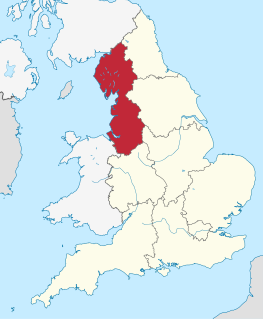
North West England is one of nine official regions of England and consists of the administrative counties of Cheshire, Cumbria, Greater Manchester, Lancashire and Merseyside. The North West had a population of 7,052,000 in 2011. It is the third-most-populated region in the United Kingdom, after the South East and Greater London. The largest settlements are Manchester and Liverpool.

Stockport is a large town in Greater Manchester, England, 7 miles (11 km) south-east of Manchester city centre, where the rivers Goyt and Tame merge to create the River Mersey. It is the largest town in the metropolitan borough of the same name.
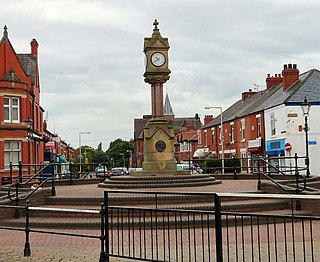
Reddish is an area in Metropolitan Borough of Stockport, Greater Manchester, England. 4.6 miles (7.4 km) south-east of Manchester city centre. At the 2011 Census, the population was 28,052. Historically part of Lancashire, Reddish grew rapidly in the Industrial Revolution and still retains landmarks from that period, such as Houldsworth Mill, a former textile mill.

Daniel Adamson was an English engineer who became a successful manufacturer of boilers and was the driving force behind the inception of the Manchester Ship Canal project during the 1880s.
B. Hick and Sons, subsequently Hick, Hargreaves & Co, was a British engineering company based at the Soho Ironworks in Bolton, England. Benjamin Hick, a partner in Rothwell, Hick and Rothwell, later Rothwell, Hick & Co., set up the company in partnership with two of his sons, John (1815–1894) and Benjamin (1818–1845) in 1833.

Neilson and Company was a locomotive manufacturer in Glasgow, Scotland.
Bradshaw Gass & Hope is an English firm of architects founded in 1862 by Jonas James Bradshaw (1837–1912). The style "Bradshaw Gass & Hope" was adopted after J. J. Bradshaw's death and referred to the remaining partners John Bradshaw Gass and Arthur John Hope.

Hubert James Austin was an English architect who practised in Lancaster. With his partners he designed many churches and other buildings, mainly in the northwest of England.
Mather & Platt is the name of several large engineering firms in Europe, South Africa and Asia that are subsidiaries of Wilo SE, Germany or were founded by former employees. The original company was founded in the Newton Heath area of Manchester, England, where it was a major employer. That firm continues as a food processing and packaging business, trading as M & P Engineering in Trafford Park, Manchester.
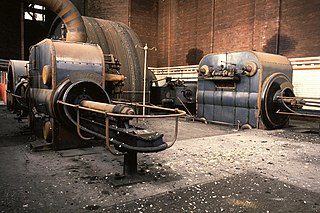
Yates & Thom Ltd, or Yates of Blackburn, was a British manufacturer of stationary steam engines and boilers at the Canal Ironworks, Blackburn, Lancashire, England.

Stott and Sons was an architectural practice in Lancashire between 1847 and 1931. It specialised in cotton mills, designing 191 buildings of which 130 were mills or buildings related to the cotton industry. Abraham Henthorn Stott was born on 25 April 1822 in the parish of Crompton. He served a seven-year apprenticeship with Sir Charles Barry, the architect of the Houses of Parliament and Manchester Art Gallery. Abraham returned to Oldham in 1847 and founded the architectural practice of A H Stott. It was known for his innovative structural engineering. His brother Joseph Stott in 1866 started his career here before leaving to start his own practice. Three of his nine children worked in the practice. Jesse Ainsworth Stott became the senior partner. Philip Sydney Stott spent three years in the practice before starting his own. After Abraham's retirement his practice was renamed Stott and Sons.

John Hick was a wealthy English industrialist, art collector and Conservative Party politician who sat in the House of Commons from 1868 to 1880, he is associated with the improvement of steam-engines for cotton mills and the work of his firm Hick, Hargreaves and Co. universal in countries where fibre was spun or fabrics woven.

W & J Galloway and Sons was a British manufacturer of steam engines and boilers based in Manchester, England. The firm was established in 1835 as a partnership of two brothers, William and John Galloway. The partnership expanded to encompass their sons and in 1889 it was restructured as a limited liability company. It ceased trading in 1932.
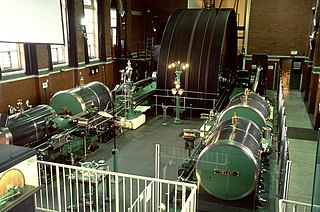
J & E Wood was a company that manufactured stationary steam engines. It was based in the Bolton in Greater Manchester, England. The company produced large steam-driven engines for textile mills in Lancashire and elsewhere.

The Weavers' Triangle is an area of Burnley in Lancashire, England consisting mostly of 19th-century industrial buildings at the western side of town centre clustered around the Leeds and Liverpool Canal. The area has significant historic interest as the cotton mills and associated buildings encapsulate the social and economic development of the town and its weaving industry. From the 1980s, the area has been the focus of major redevelopment efforts.

Queen Street Mill is a former weaving mill in Harle Syke, a suburb to the north-east of Burnley, Lancashire, that is a Grade I listed building. It was built in 1894 for the Queen Street Manufacturing Company. It closed on 12 March 1982 and was mothballed, but was subsequently taken over by Burnley Borough Council and maintained as a museum. In the 1990s ownership passed to Lancashire Museums. Unique in being the world's only surviving operational steam-driven weaving shed, it received an Engineering Heritage Award in November 2010.
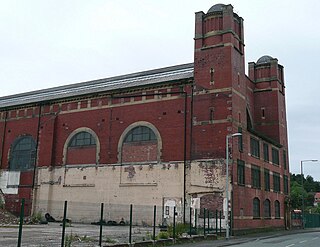
Stalybridge, Hyde, Mossley & Dukinfield Tramways & Electricity Board (SHMD) was a public transport and electricity supply organisation formed by Act of Parliament in August 1901. It was a joint venture between the borough councils of Stalybridge, Hyde, Mossley and Dukinfield. The system was officially opened on 21 May 1904.
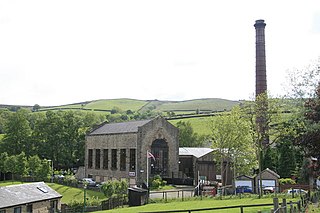
Bancroft Shed was a weaving shed in Barnoldswick, Lancashire, England, situated on the road to Skipton. Construction was started in 1914 and the shed was commissioned in 1920 for James Nutter & Sons Limited. The mill closed on 22 December 1978 and was demolished. The engine house, chimneys and boilers have been preserved and maintained as a working steam museum. The mill was the last steam-driven weaving shed to be constructed and the last to close.

Maxwell and Tuke was an architectural practice in Northwest England, founded in 1857 by James Maxwell in Bury. In 1865 Maxwell was joined in the practice by Charles Tuke, who became a partner two years later. The practice moved its main office to Manchester in 1884. Frank, son of James Maxwell, joined the practice in the later 1880s and became a partner. The two senior partners both died in 1893, and Frank Maxwell continued the practice, maintaining its name as Maxwell and Tuke.

















